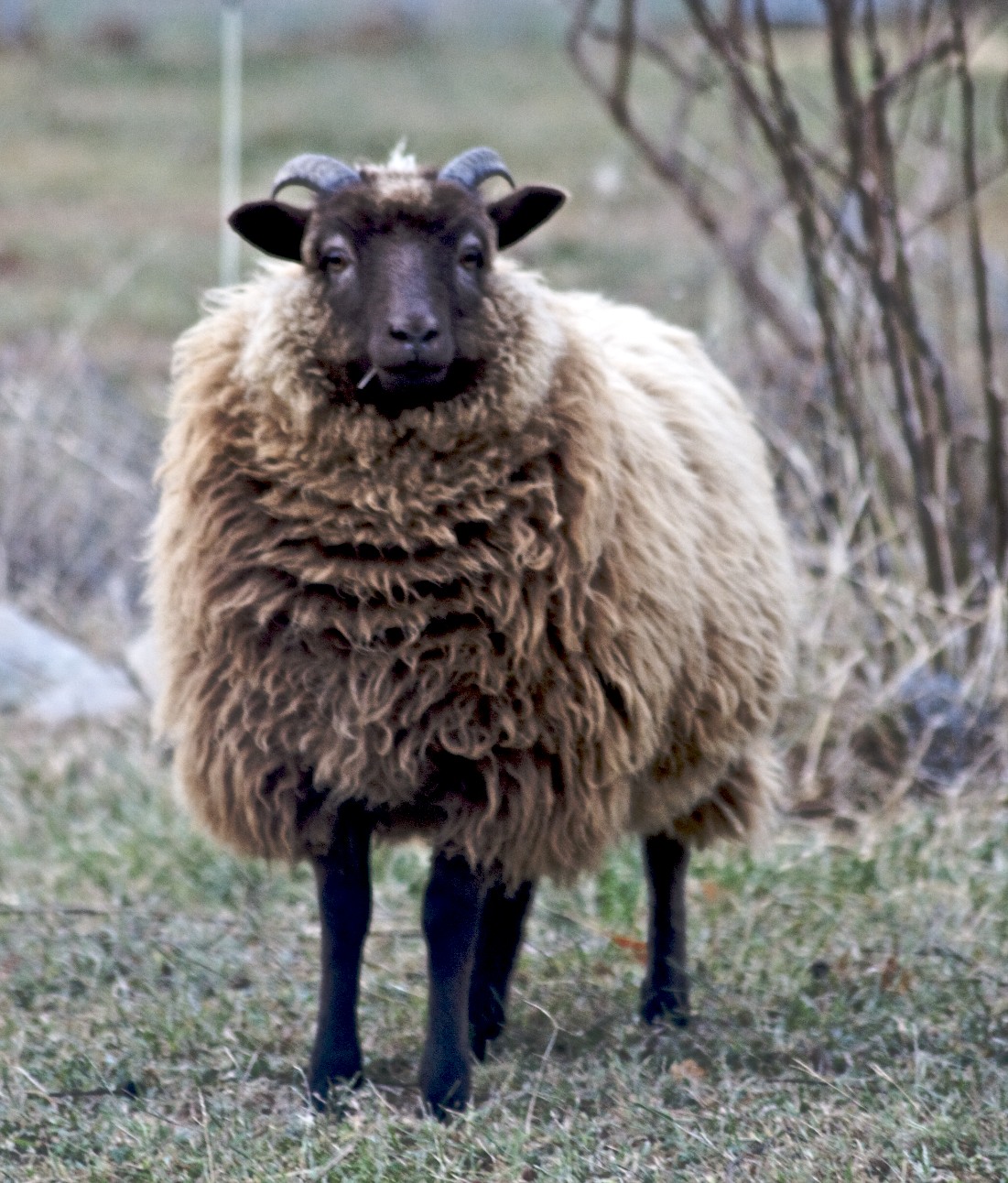Sheep
Introduction
|
On this page... (hide) Domestic sheep are small ruminants, usually with a crimped hair called wool and often with horns forming a lateral spiral. Sheep have horizontal slit-shaped pupils, possessing excellent peripheral vision. |
1. Speech
According to our Speech Guide, this creature speaks Low Speech naturally. It is therefore not able to communicate with Luperci. This creature is listed as having the ability to learn some limited comprehension of high speech, but generally will never be able to speak it.
2. Uses
- Food: Sheep are an important source of food, both as a dairy product or slaughtered for their meat.
- Meat: Depending on the animal's age, the meat from sheep can range in taste and consistency, with older animals being tougher and stronger in flavor than the meat of lambs.
- Milk: Ewes produce milk for roughly 80-100 days after lambing before drying up. Milk yield varies wildly, with meat- and wool-type sheep producing less than dairy-type sheep.
- Cheese: Higher in fats, CLA, and solids when compared to other milks, sheep's milk is very desirable for the production of cheese.
- By-Products: In addition to food, there are a whole number of useful things that can be made from the by-products of sheep.
- Fleece: The crimped fibers from wooly sheep can be rooed (hand-picked) or shorn from the animal and spun into yarn.
- Pelts and hides: As with any animal, hides and pelts can be made from sheep.
- Sheepskin: A natural insulator, tanned sheepskin with the fleece left intact can be used in the creation of a number of items, including equestrian tack and coverings.
- Parchment: Skins that have been scraped from hair and stretched without being tanned can be used in lieu of paper.
- Intestines: The intestines of sheep have traditionally been used to make catgut.
- Horns and Bones: Sheep horns, which are hollow, can be used as vessels, containers, or tools while bones can be used to make fishing hooks, needles, tools, and ornamentals.
- Glue: Made from boiling connective tissues (skin, tendons, bones, hooves, etc.). Animal glue has a number of uses ranging from adhering items together to preserving hairstyles.
- Manure: Manure can be composted into fertilizer but, historically, was used for fuel.
- Companionship: --
- Labor: --
3. Types
An important note regarding "breeds" and "types" of domesticated animals:
As with most domesticated animals formerly maintained by humans, specific "types" of this species are likely to have interbred significantly. Breeds are no longer in existence: however, traits of these particular breeds (the most frequently reared) are likely to persist in the wild landrace of this type of animal found in 'Souls.
Without selective breeding, formerly domesticated animals would breed indiscriminately. Over a few generations, it's likely they would begin to revert to their former wild type and lose some of the characteristics enforced by humans and breeding. While not enough time has passed for all selectively bred traits to disappear, it's likely many of these traits have become blended into one another.
Specifically with regards to landrace sheep, it is more likely that time and nature would have selected against the larger, long-tailed sheep types that required shearing by human hands in favor of the smaller, naturally short-tailed varieties that shed their wool every spring, allowing the fleece to be rooed rather than shorn.
3.1 Sheep↪ Domestic Sheep (Ovis aries) |
| Useful Information |
|
| Quick Facts |
|
| Appearance |
4. Additional Resources
4.1 Icons







5. Sources


